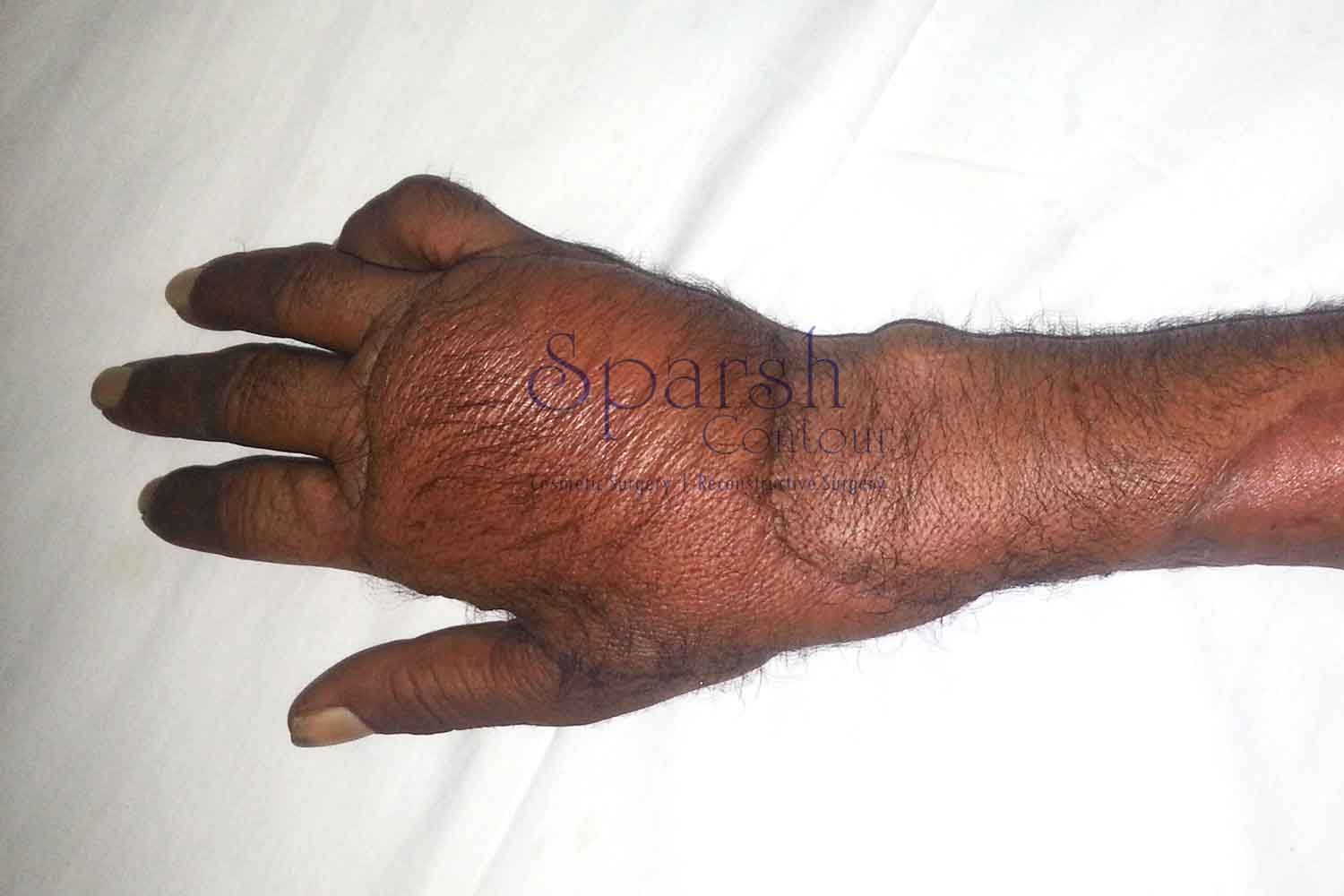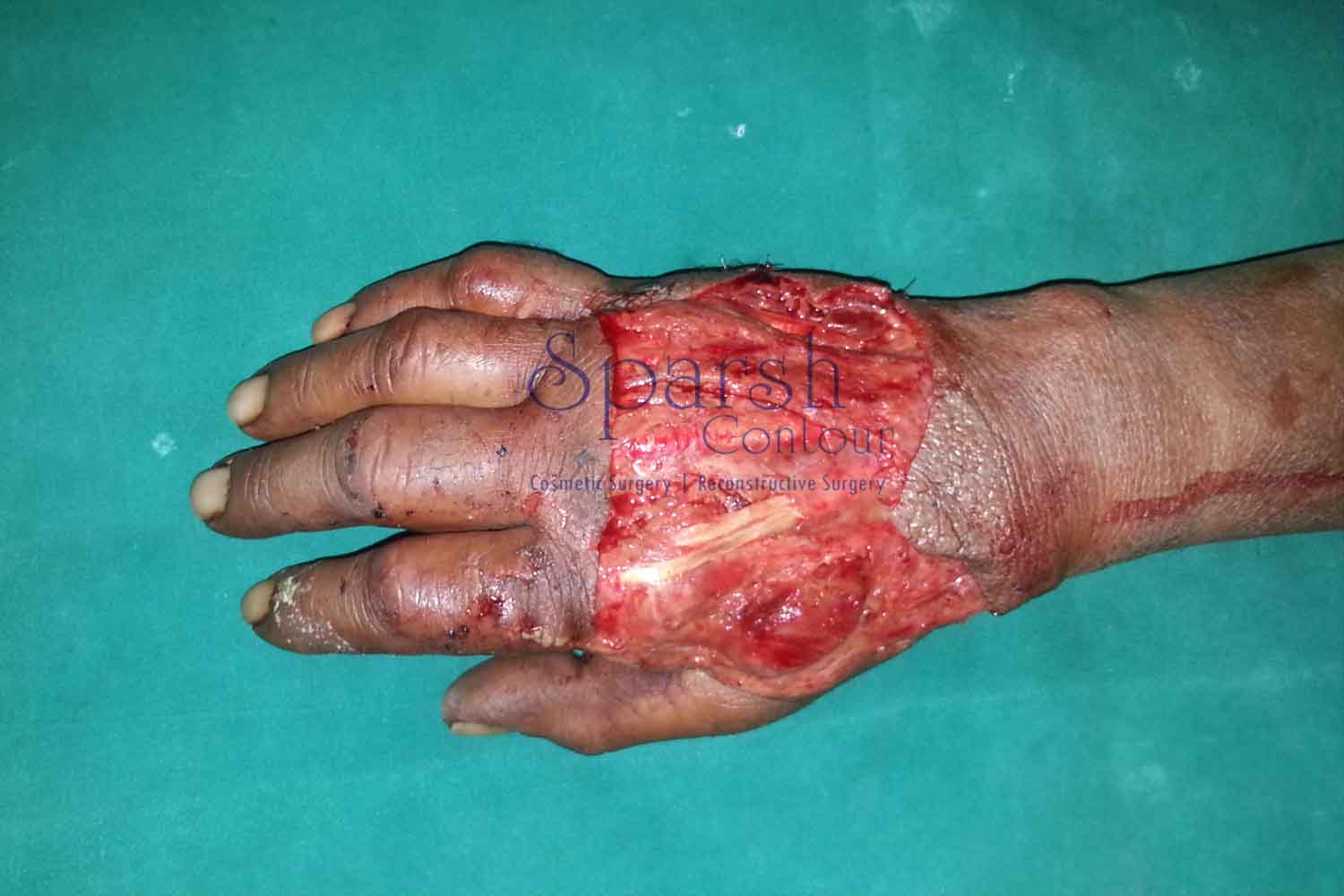Hand Surgeries
Crush Injury Hand
Crush Injury Hand Surgery is a specialized procedure performed by plastic surgeons to treat severe hand injuries where the hand has been crushed or compressed by a heavy object. These injuries can cause extensive damage to the bones, muscles, tendons, nerves, and blood vessels, leading to loss of function, deformity, and in severe cases, potential amputation if not properly treated.
In a crush injury, the force exerted on the hand can cause complex fractures, dislocations, and soft tissue damage. The immediate goal of surgery is to stabilize the hand, repair damaged structures, and restore as much function as possible. This can involve multiple surgical techniques, including fracture fixation with plates, screws, or pins; repair or grafting of damaged tendons and nerves; revascularization to restore blood flow; and skin grafts or flaps to cover extensive soft tissue loss.
Dr. Sushil Nahar, has expertise in microsurgery, which is often essential in these cases to repair tiny blood vessels and nerves under a microscope. The surgery may be performed in stages, depending on the severity of the injury and the patient's overall condition. The goal of crush injury hand surgery is to restore the maximum possible function of the hand, allowing the patient to return to daily activities and work with minimal disability.
In a crush injury, the force exerted on the hand can cause complex fractures, dislocations, and soft tissue damage. The immediate goal of surgery is to stabilize the hand, repair damaged structures, and restore as much function as possible. This can involve multiple surgical techniques, including fracture fixation with plates, screws, or pins; repair or grafting of damaged tendons and nerves; revascularization to restore blood flow; and skin grafts or flaps to cover extensive soft tissue loss.
Dr. Sushil Nahar, has expertise in microsurgery, which is often essential in these cases to repair tiny blood vessels and nerves under a microscope. The surgery may be performed in stages, depending on the severity of the injury and the patient's overall condition. The goal of crush injury hand surgery is to restore the maximum possible function of the hand, allowing the patient to return to daily activities and work with minimal disability.
 After
After  Before
Before Drag
Hand Surgeries
What Crush Injury Hand Surgery helps in ?
- It provides immediate stabilization of the hand by repairing fractures and dislocations to prevent further damage.
- The surgery repairs or reconstructs damaged bones, muscles, tendons, nerves, and blood vessels, which is essential for regaining hand function.
- In severe cases, surgery can prevent the need for amputation by saving and repairing as much of the hand as possible.
- It aims to restore maximum possible function to the hand, allowing patients to perform daily activities and maintain their quality of life.
our expert answers
frequently asked questions
When is crush injury hand surgery necessary?
Surgery is necessary when the hand sustains severe trauma resulting in broken bones, torn muscles, damaged tendons, or severed nerves. It is performed to prevent further complications, restore hand function, and enhance overall recovery.
What does the surgical procedure involve?
The procedure involves stabilizing fractures, repairing damaged tissues, restoring blood flow, and reconstructing the hand’s anatomy. Techniques may include fixation with plates and screws, tendon repair, nerve repair, and skin grafts if necessary.
How long is the recovery period after surgery?
Recovery time varies depending on the severity of the injury and the complexity of the surgery. Generally, patients may need several weeks to months of recovery and rehabilitation to regain full function of the hand.
Will I need rehabilitation after surgery?
Yes, rehabilitation is typically required to help restore hand function and strength. This may involve physical therapy and occupational therapy to improve mobility, dexterity, and overall hand function.
How can I prepare for crush injury hand surgery?
Preparation involves discussing your medical history with your surgeon, following pre-operative instructions, and arranging for post-operative care and rehabilitation. Your surgeon will provide specific guidelines based on your condition.
APPOINTMENT
